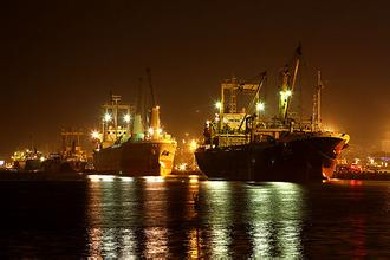The total sales recorded KRW 2.15 trillion, decreased by 7.6% YoY, due to the fall of container freight rate during off-season, despite increase in container transport volume. In terms of profitability, operating loss decreased by 37.2% YoY to KRW 62.2 billion as total fuel costs were reduced by 21.4% YoY (result of 15.1% YoY decrease in fuel usage and 5.2% reduction in fuel purchase unit price).
For container business unit, container transport volume increased 0.7% YoY. However, container freight rates fell 2.0% YoY, resulting 6.4% YoY decrease in container sales to KRW 1.93 trillion. Operating loss recorded KRW 35.8 billion due to off-season decline in demand, despite 23.1% savings in fuel costs. Yet, operating loss was reduced by 49.3% YoY.
Bulk business unit's revenues were KRW 171.8 billion, which is 0.5% lower in comparison to 2013 1st quarter due to 8.1% YoY decrease in freight volume, even-though bulk freight rates rose by 5.8% YoY. The bulk business unit cut 7.6% YoY in fuel costs but recorded an operating loss of KRW 37.1 billion due to the slow bulk shipping market.
The company's net loss recorded KRW 224.5 billion, in which a loss on disposal of old vessels of KRW 157.3 billion was reflected. Disposal of old vessels were part of its plans to improve financial structure.
Regarding the 2nd quarter, Hanjin Shipping stated that "although deliveries of mega vessels are being made in container market, carriers are continuing their various efforts such as service rationalization, slow steaming, early return of chartered-in vessels and scrapping of old vessels, thus profitability is expected to improve. Additionally, rate increase during the coming peak-season and stable oil price is also likely to contribute to increase in profitability. As for bulk sector, the global bulk freight volume is expected to rise back up due to recovery of Chinese construction business, resumption of Columbia's coal exports, etc."
Hanjin Shipping also stated, "Operating profit is expected to improve from 2nd quarter as continuous rate restoration and cost-cutting efforts since 2nd half of last year show full effect. We also expect to secure liquidity as financial structure improvement plans such as the liquidation of the long-term contract-based bulk & LNG business and the capital increase, etc. bring about tangible results."








